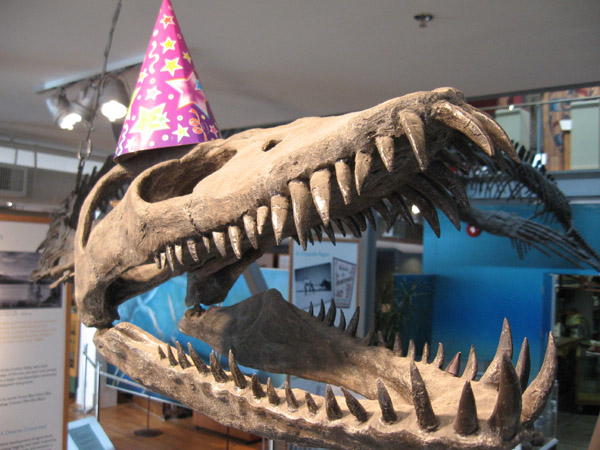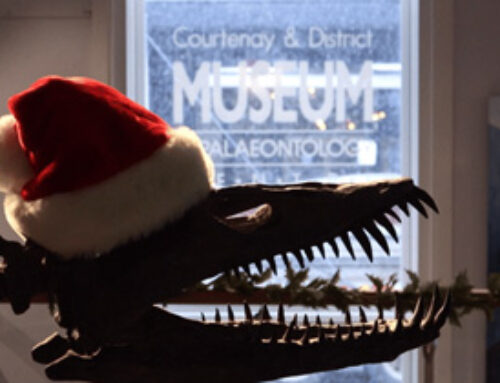
In 2018, the British Columbia Paleontological Alliance proposed the adoption of a provincial fossil to celebrate BC’s ancient ecosystems. After much discussion, they recommended a short-list of seven candidates, ranging in scope from crabs and ammonites to ichthyosaurs and giant elasmosaur marine reptiles.
While all of these fossils are important and have their own fans, Mike Trask’s discovery of an elasmosaur in Courtenay’s Puntledge River was hugely significant. These giant marine reptiles lived in ancient seas during the Cretaceous Period, but most specimens had been discovered in Texas, Kansas, and Alberta; the Puntledge find in 1988 was the first one found west of the Canadian Rockies.
Recognizing its importance, the Courtenay and District Museum organized a major excavation involving around 40 volunteers who worked tirelessly over many months. The discovery fueled an enormous local interest in palaeontology and resulted in the formation of the Vancouver Island Paleontological Society, the first such organization in BC and a catalyst for the establishment of other societies.
For a brief time in 2005, fossils were defined by the BC government as minerals but public outcry pushed them to change that classification. A new attitude of preservation and education led the government to place them under care of the Land Act. This gave fossils more protection, recognizing them as an irreplaceable heritage resource with scientific value.
The enthusiasm for an official provincial fossil shows how far public perception of fossils had changed. During October 2018, British Columbians were able to submit online ballots for their favourite candidates while learning more about BC’s ancient oceans and supporting science education. By November 23, the elasmosaur had gathered a whopping 48% of the vote, making it the people’s choice for BC Provincial fossil.
What does this mean for the elasmosaur?
As British Columbia’s Provincial Fossil, the elasmosaur will continue to inspire a new generation of fossil enthusiasts and future palaeontologists. It symbolizes the remarkable ancient history of the province while encouraging people to pursue and support education in the sciences.
To officially add the elasmosaur to BC’s provincial symbols, the government must make an amendment to the Provincial Symbols and Honours Act, and these next steps in the process are now underway.





